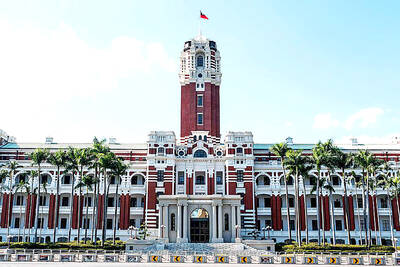Pressure groups on Tuesday demanded that the WTO simplify the rules under which governments can import and producers export generic copies of drugs under patent, to tackle fears of a flu pandemic.
The groups, including Medecins Sans Frontieres (MSF), argue that easing the rules would encourage more producers to manufacture generic drugs under so-called compulsory licensing. Urgently needed drugs would become more widely available should the bird-flu virus change so that it can pass easily between humans.
The campaigners cite Tamiflu, which is produced by Switzerland's Roche Holding AG and is considered the only drug likely to be effective in an outbreak of the bird flu disease in humans. Governments have been scrambling to stockpile the drug in case of a pandemic.
"Tamiflu illustrates the danger of patent monopolies -- you have a shortage of a drug and don't have an easy remedy for a disease. This is exactly the situation when countries would have to use compulsory licenses for import and export," said Ellen 't Hoen, who directs the campaign for access to essential medicines at MSF, also known as Doctors Without Borders.
She said WTO rules were "not sufficient and robust enough to deal with public health crises."
Under WTO rules, countries can issue compulsory licenses to disregard patent rights but only after negotiating with the patent owners and paying them adequate compensation. If they declare a public health emergency, governments can skip the negotiating.
Initially the production of such generic drugs was strictly limited to domestic use. But in a decision in August 2003, the WTO for the first time allowed generic drugs under compulsory licenses to be exported, albeit under very strict conditions.
Although the decision was a response to poor countries' growing need for cheap generic drugs to tackle epidemics such as HIV/AIDS, critics now say that the complicated procedure to export such drugs has put off generic manufacturers.
"The rich countries congratulate themselves ... but in reality it does not bear fruit. In reality it removes the economic incentive for generic production," 't Hoen said.
Another issue is that many rich countries, including the US and the EU, opted out of the 2003 decision, meaning they would be unable to import generic drugs made under compulsory license even if they wanted to build up stocks against a disease outbreak, such as a flu pandemic.
Consumers International demands that countries that opted out be allowed to opt back in.
India has already said that it would consider using compulsory licensing to allow its drugmakers to copy Tamiflu.
Indian drugmaker Cipla Ltd -- which says it has developed a generic version of Tamiflu -- has applied to Roche for permission to copy the flu drug, but has pushed the Indian government to invoke compulsory licensing anyway.
A Taiwanese official said the country had no plans to begin manufacture of the Tamiflu because it has not yet received permission from Roche, even though many Taiwanese scientists are reportedly already able to produce Tamiflu copies in the laboratory.
Roche says it is considering a number of requests to make licensed versions, but did not elaborate.

The CIA has a message for Chinese government officials worried about their place in Chinese President Xi Jinping’s (習近平) government: Come work with us. The agency released two Mandarin-language videos on social media on Thursday inviting disgruntled officials to contact the CIA. The recruitment videos posted on YouTube and X racked up more than 5 million views combined in their first day. The outreach comes as CIA Director John Ratcliffe has vowed to boost the agency’s use of intelligence from human sources and its focus on China, which has recently targeted US officials with its own espionage operations. The videos are “aimed at

STEADFAST FRIEND: The bills encourage increased Taiwan-US engagement and address China’s distortion of UN Resolution 2758 to isolate Taiwan internationally The Presidential Office yesterday thanked the US House of Representatives for unanimously passing two Taiwan-related bills highlighting its solid support for Taiwan’s democracy and global participation, and for deepening bilateral relations. One of the bills, the Taiwan Assurance Implementation Act, requires the US Department of State to periodically review its guidelines for engagement with Taiwan, and report to the US Congress on the guidelines and plans to lift self-imposed limitations on US-Taiwan engagement. The other bill is the Taiwan International Solidarity Act, which clarifies that UN Resolution 2758 does not address the issue of the representation of Taiwan or its people in

US Indo-Pacific Commander Admiral Samuel Paparo on Friday expressed concern over the rate at which China is diversifying its military exercises, the Financial Times (FT) reported on Saturday. “The rates of change on the depth and breadth of their exercises is the one non-linear effect that I’ve seen in the last year that wakes me up at night or keeps me up at night,” Paparo was quoted by FT as saying while attending the annual Sedona Forum at the McCain Institute in Arizona. Paparo also expressed concern over the speed with which China was expanding its military. While the US

SHIFT: Taiwan’s better-than-expected first-quarter GDP and signs of weakness in the US have driven global capital back to emerging markets, the central bank head said The central bank yesterday blamed market speculation for the steep rise in the local currency, and urged exporters and financial institutions to stay calm and stop panic sell-offs to avoid hurting their own profitability. The nation’s top monetary policymaker said that it would step in, if necessary, to maintain order and stability in the foreign exchange market. The remarks came as the NT dollar yesterday closed up NT$0.919 to NT$30.145 against the US dollar in Taipei trading, after rising as high as NT$29.59 in intraday trading. The local currency has surged 5.85 percent against the greenback over the past two sessions, central